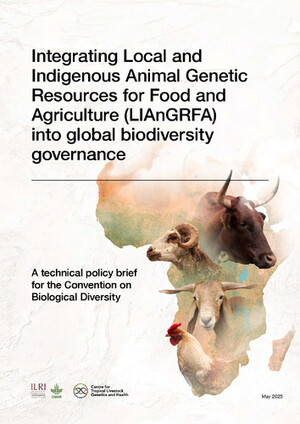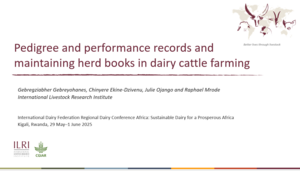
Potential of Lablab purpureus accessions for crop-livestock production in the West African savanna
Abstract
The introduction and use of herbaceous legumes may contribute to agricultural intensification, especially in the context of sustainable crop and livestock production systems. In the context of evaluating different legume species for these systems in moist savanna zone of West Africa, the present study involved the evaluation of 46 accessions of Lablab purpureus (L.) Sweet between 2000 and 2002 at Samaru, Zaria in the northern Guinea savanna of Nigeria to identify accessions with the potential to contribute to grain or forage production and those with the potential for multiple use. Grain yields (0.6-2.4 t/ha) with a mean seed crude protein and phosphorus content of 25.3 and 0.46 g/kg, respectively, were obtained. Dry matter yields (leaf : 0.3-3.1, stem: 0.2-4.6, root: 0.03-0.3 t/ha) were produced between 40 and 140 days after planting. Within this same period up to 1152 kg shoot crude protein/ha, equivalent to 184 kg N/ha, were recorded for accessions. Ten accessions that may contribute to grain production, eight accessions that may contribute to forage production and six accessions with drought tolerance were identified. Some white-seeded accessions (Grif 1246, ILRI 4612 and PI 183451) with good grain and forage yield and high-protein content have the potential to provide more and higher quality food for people and feed for livestock. The observed potential to contribute to grain production for protein-rich food, feed for livestock and green manure for soil N improvement suggests lablab may be an acceptable legume option for use in cereal-legume livestock systems in the moist savanna zone of West Africa.
Citation
Journal of Agricultural Science;145(3): 229-238










